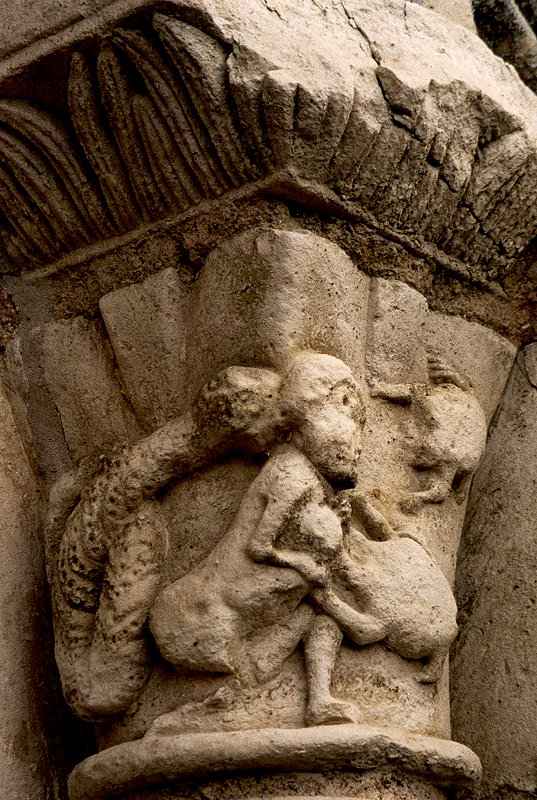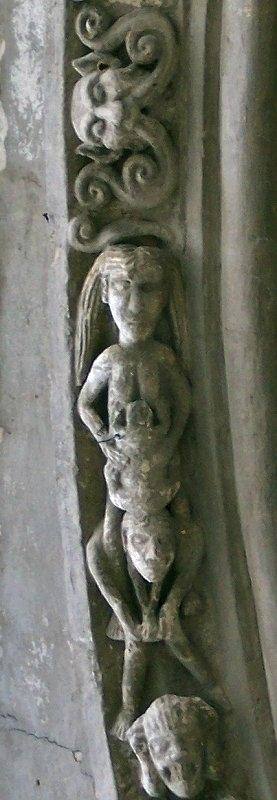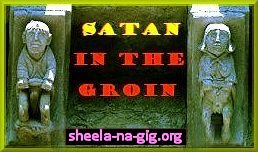|
Saint-Léger-de-Montbrillais (Vienne)
A serpent attacks the sinner's head (or specifically her coiffure or tresse) while a tortoise fastens on to her breast. A toad was probably assailing her face. Snakes are the most common beast of punishment in this particular context, while toads feature occasionally. But tortoises are very rare. Malheureusement endommagé, le beau portail de l'église possède des gravures remarquables du châtiment dans la vie de l'au-delà et des péchés de la chair. Un serpent attaque la pécheresse (plus particulièrement sa coiffure ou sa tresse), tandis qu'une tortue s'attache à son sein. Une autre tortue (endommagée) attaquait probablement son visage. Le serpent est le plus commun des animaux du châtiment dans ce contexte particulier, alors que les crapauds n'apparaissent qu'occasionnellement. Mais les tortues sont très rares. A more conventional punishment - with entirely imaginary beasts, but an exhibitionist-acrobat sinner - can be seen at Rabastens (Tarn). Compare also with the capital at Deyrançon (Seux-Sèvres) and the beautifully-sculpted capital at Vézelay (Yonne). The earliest example of eternal suckling of the damned occurs on an Anglo-Saxon cross-shaft at Edenham in Lincolnshire.
|
 |
A woman suckling a toad is part of a hellish scene on the outermost voussoir
of the doorway.
The central motif on the voussoir is a tendril- or snake-spewing mask (a "Green
Man") representing Hell or Satan.
On the right, a devil tramples a sinner whose tongue extrudes in anguish.

 |
